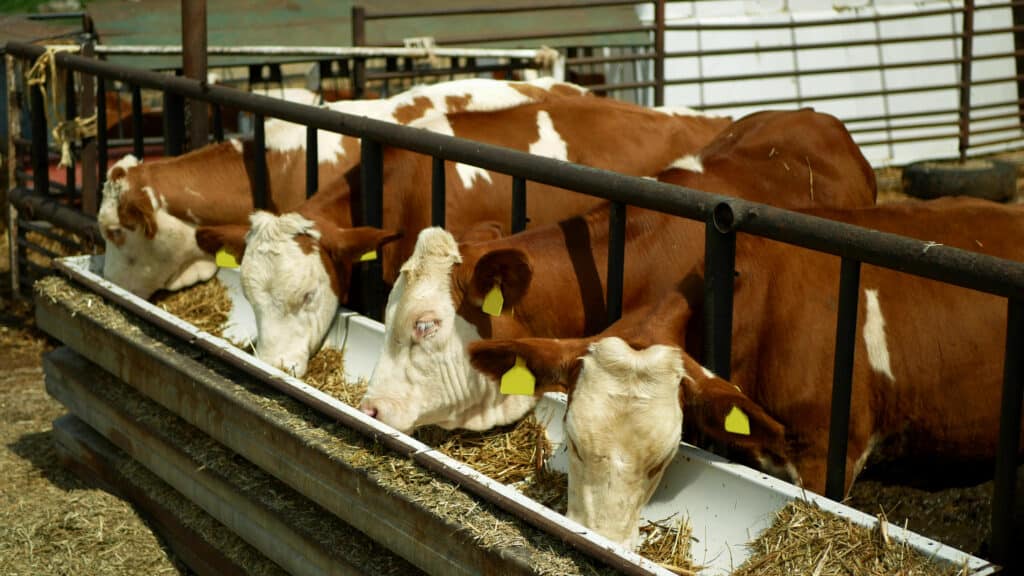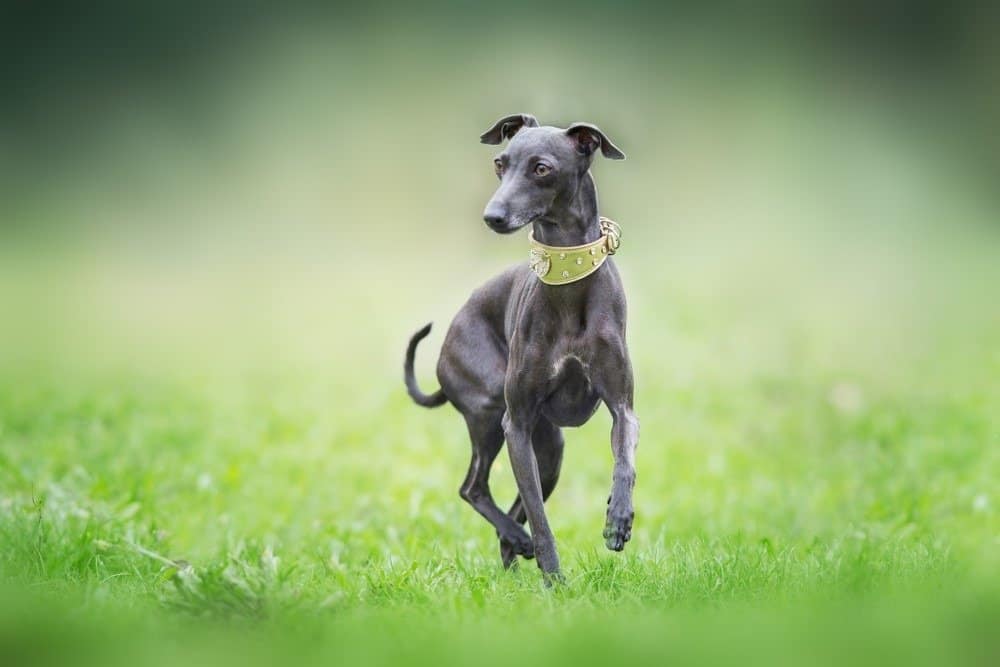A domesticated plant or animal has been genetically modified over generations by humans to cultivate traits that are more desirable or favorable for humans.
Summary
Domestication is when humans adapt wild plants or animals for their use. Domesticated plants and animals have many functions for people, such as food, clothing, work, and medicine. Domesticated species vary genetically from wild species and they require humans for their survival.
Domestication of plants and animals was a critical development in human history that allowed people to shift to an agricultural society and away from a hunter-gatherer system.

Experts believe the first animals to be domesticated were
dogs
.
©Marjolein Hameleers/Shutterstock.com
How to Pronounce
Domesticated is pronounced [duh·meh·stuh·kay·tuhd]
History of Domestication
Experts believe the first animals to be domesticated were dogs, followed by sheep, goats, and chickens. Dogs were used for hunting, companionship, and protection, while other animals were raised for food. Eventually, larger animals were domesticated, such as horses and oxen, to be used for work.
Plants were domesticated when people collected and planted seeds from wild plants. The first plants to be grown by humans were wheat, lentils, peas, and barley. Other early plants include rice in Asia and potatoes in South America. Plants were also domesticated to create clothing. Cotton is an early crop domesticated for fiber.
How Did Domestication Change Human History?
Historians believe that the first domesticated animals and plants can be traced back to early civilization in ancient Mesopotamia. Before humans began domesticating plants and animals, people hunted wild animals and gathered plants for food. Domestication led to an agricultural society, which meant larger groups of people established permanent settlements, changing the course of civilization.
Fewer people were now able to provide greater amounts of food. With time freed up from spending the day hunting and gathering food, society was able to spend its time on other pursuits such as travel, communication, and trade. Population densities increased, and the world’s first villages and cities were built.
Domesticated Animals
When people began domesticating animals, they first chose herbivores (animals that eat plants) because animals that graze were easier to feed. Sheep and goats may have wandered in to graze around early human settlements. After a time, they became more tame and were easy to raise for food.

Domesticated animals are raised for several reasons. Cows are raised for food.
©Tomas Vynical/Shutterstock.com
Domesticated dogs helped people hunt, for protection, and as companions. Modern dogs are descended from an ancient wolf population. Scientists believe that wolves originally approached humans for scraps, grew tame, and eventually evolved into the pets we know and love today.
Domesticated animals are raised for several reasons:
People have bred animals for certain traits, such as calm temperament and the ability to reproduce in captivity. These traits eventually change the domesticated animal, making it a distinct species from its wild counterparts. For example, wild chickens only hatched a few eggs a year. In contrast, modern chickens can lay 200 or more eggs per year.
Domesticated Versus Tame
Domestication of an animal is not the same as taming a wild animal. Taming is modifying the behavior of an animal. But domestication happens through selective breeding, creating a permanent genetic difference. For example, ancient wild chickens weighed under two pounds, while the average weight of modern chickens is around nine pounds.
In another example, sheep were bred to keep their soft inner wool for fiber but lose the bristly outer hairs. Also, domesticated animals generally have smaller brains and less keen senses than wild animals as they no longer need to avoid predators in the wild.
Domesticated animals tend to be:
- Genetically different from their wild ancestors (can’t breed with wild counterparts).
- Generally friendly toward humans.
- Dependent on humans for food, protection, and reproduction.
- Physically different than wild animals such as smaller skulls, different colored coats, and floppy ears.
Domesticated Plants
These are crops that have been bred through artificial selection. Humans still rely on plants that were domesticated thousands of years ago, such as wheat, maize (corn), rice, sugarcane, and barley. By selecting desirable traits, humans genetically altered the plants. For example, ancient wild wheat plants had smaller seeds that shattered easily, making them harder to gather. Humans selected the plants for larger seeds that didn’t shatter, making them easier to grow and collect.

Humans still rely on plants that were domesticated thousands of years ago, such as wheat.
©iStock.com/IakovKalinin
Examples of other domesticated plants include:
When humans alter plants genetically, they are looking for traits that are more advantageous for humans. These can include larger and tastier fruit, increased crop yield, and higher resistance to pests and disease.
Fun Fact: Greyhounds are the World’s Oldest Dog Breed

This ancient breed can be traced back to the era of the Pharaohs.
©Kwadrat/Shutterstock.com
Greyhounds are possibly the oldest purebred domesticated dog. This ancient breed can be traced back to the era of the Pharaohs. Other ancient breeds include the Basenji, Akita Inu, and Siberian Husky.




